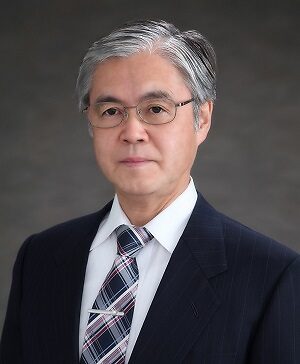OIST Seminar 'Development of Synthetic Reactions Using Transition Metal Anionic Complexes as the Key Intermediates' by Prof. Nobuaki Kamube

Date
Location
Description
Title:
Development of Synthetic Reactions Using Transition Metal Anionic Complexes as the Key Intermediates
Speaker: Prof. Nobuaki Kambe, Department of Applied Chemistry, Osaka University
Abstract:
We started our project to generate ate complexes of Ti, Zr, Co, Rh, Ni, Pd, Cu and examined their reactivities about two decade ago. With a working hypothesis that p-carbon ligands such as allyl groups or alkynes stabilize anionic complexes by withdrawing electrons from the central metal by back donation, we generated a variety of ate complexes using Grignard reagents in the presence of butadienes or alkynes. One of the exciting outcomes of this strategy is the transition metal catalyzed cross-coupling reaction between sp3-carbon centers. Nickel and cobalt, as well as palladium, catalyze the cross-coupling of alkyl (pseudo)halides with alkyl Grignard reagents under mild conditions in the presence of butadiene. These reactions proceed efficiently without the need for heteroatom ligands such as amines or phosphines, which were commonly employed in transition metal catalyzed reactions, thus demonstrating the potential of such a reaction in large scale synthesis. The reactions proceed rapidly making the present procedures compatible for use in conjunction with a wide variety of functional groups including esters, ketones, nitryls etc. Very high turn-over numbers of up to ten to the sixth order were attained in copper catalyzed alkyl-alkyl cross-coupling when butadiene or alkynes were used as ligands, permitting the use of tert-alkyl Grignrad reagents to construct quaternary carbon centers and the use of less reactive alkyl chlorides or fluorides as cross-coupling partners between unactivated sp3-carbons centers. We also developed convenient methods for introducing alkyl, aryl and/or silyl groups to olefins and dienes. One of the current interests includes carbon-carbon bond forming reactions using organofluorides as the coupling partners.
Biography:
Nobuaki Kambe is Professor of organic chemistry at Osaka University. He studied chemistry and received his PhD degree (1981) from Osaka University. He joined the Department of Applied Chemistry, Faculty of Engineering, Osaka University in 1981 as an Assistant Professor. From 1982 to 1984, he was involved in research at Colorado State University with Professor L. S. Hegedus as a postdoctoral fellow. He was promoted to Associate Professor in 1989 and to Professor in 1999. His research interests are in the areas of synthetic organic chemistry, organometallic chemistry, and physical organic chemistry.Nobuaki Kambe is Professor of organic chemistry at Osaka University. He studied chemistry and received his PhD degree (1981) from Osaka University. He joined the Department of Applied Chemistry, Faculty of Engineering, Osaka University in 1981 as an Assistant Professor. From 1982 to 1984, he was involved in research at Colorado State University with Professor L. S. Hegedus as a postdoctoral fellow. He was promoted to Associate Professor in 1989 and to Professor in 1999. His research interests are in the areas of synthetic organic chemistry, organometallic chemistry, and physical organic chemistry.
Intra-Group Category
Subscribe to the OIST Calendar: Right-click to download, then open in your calendar application.



